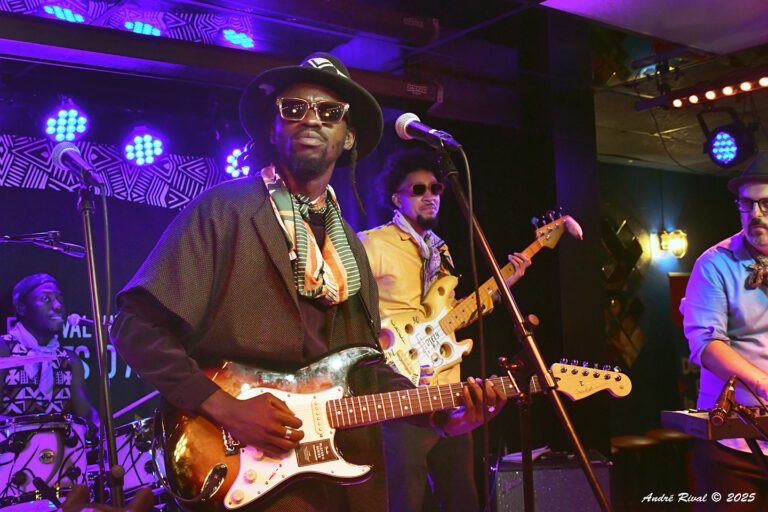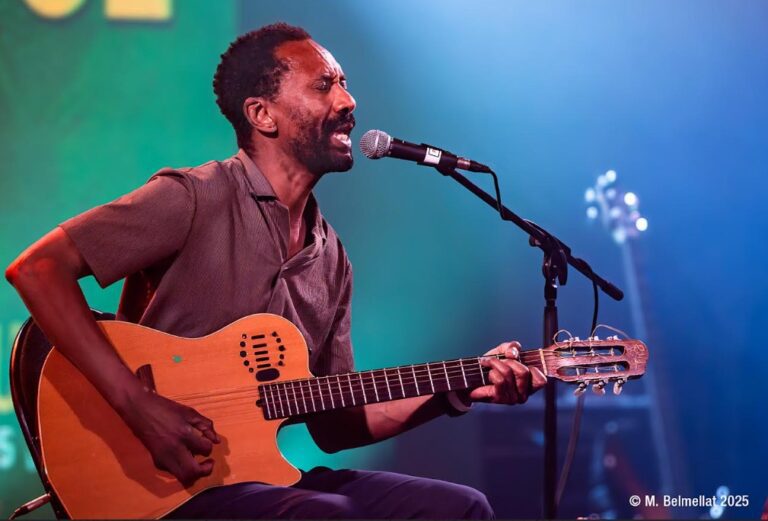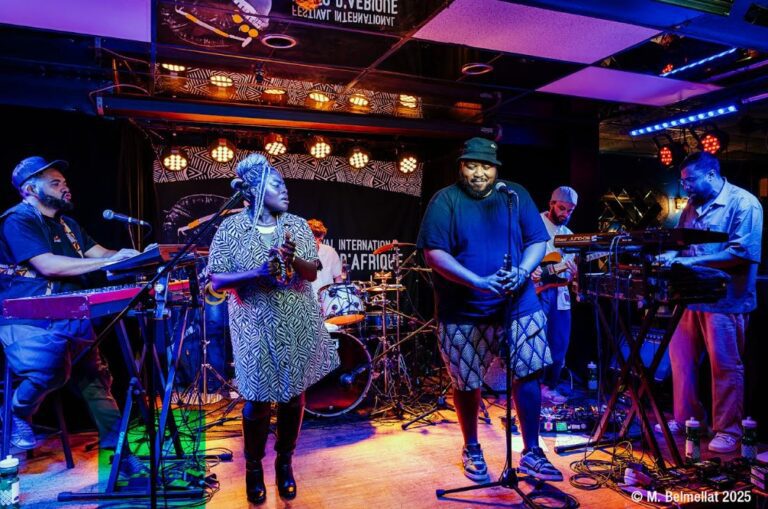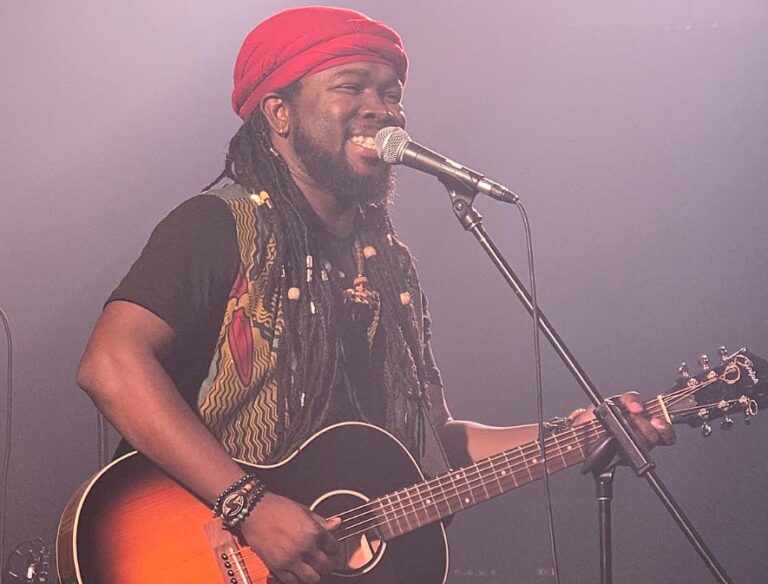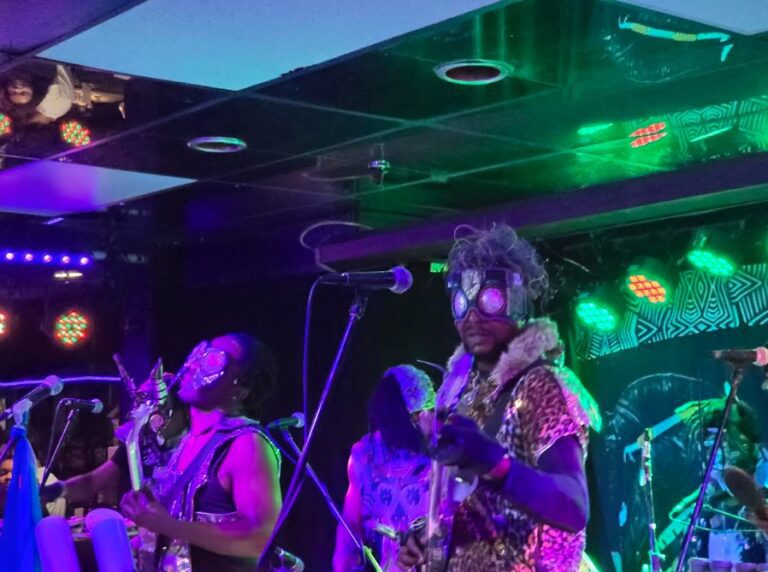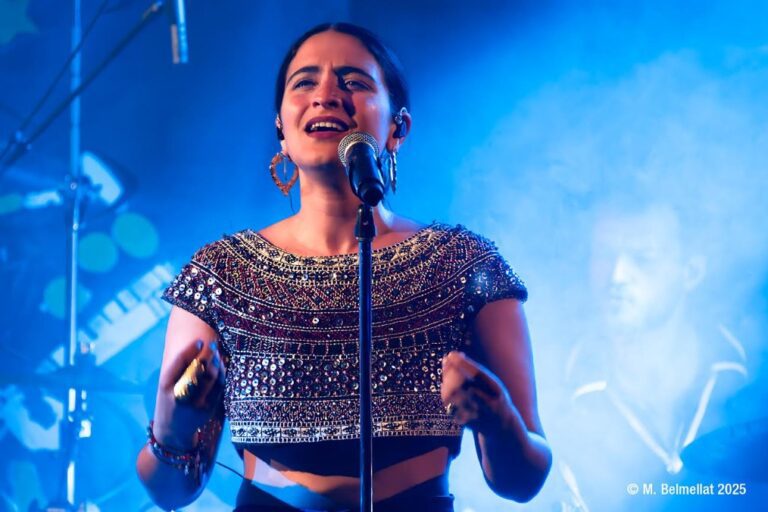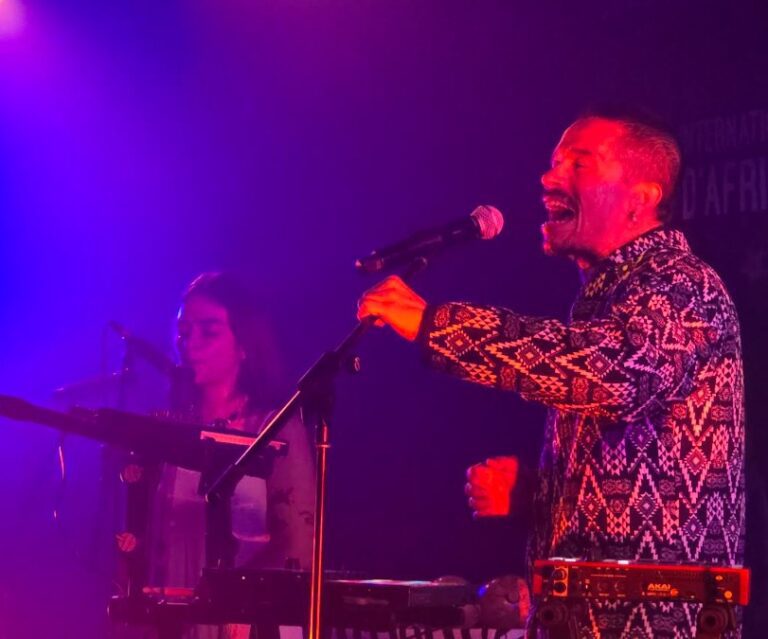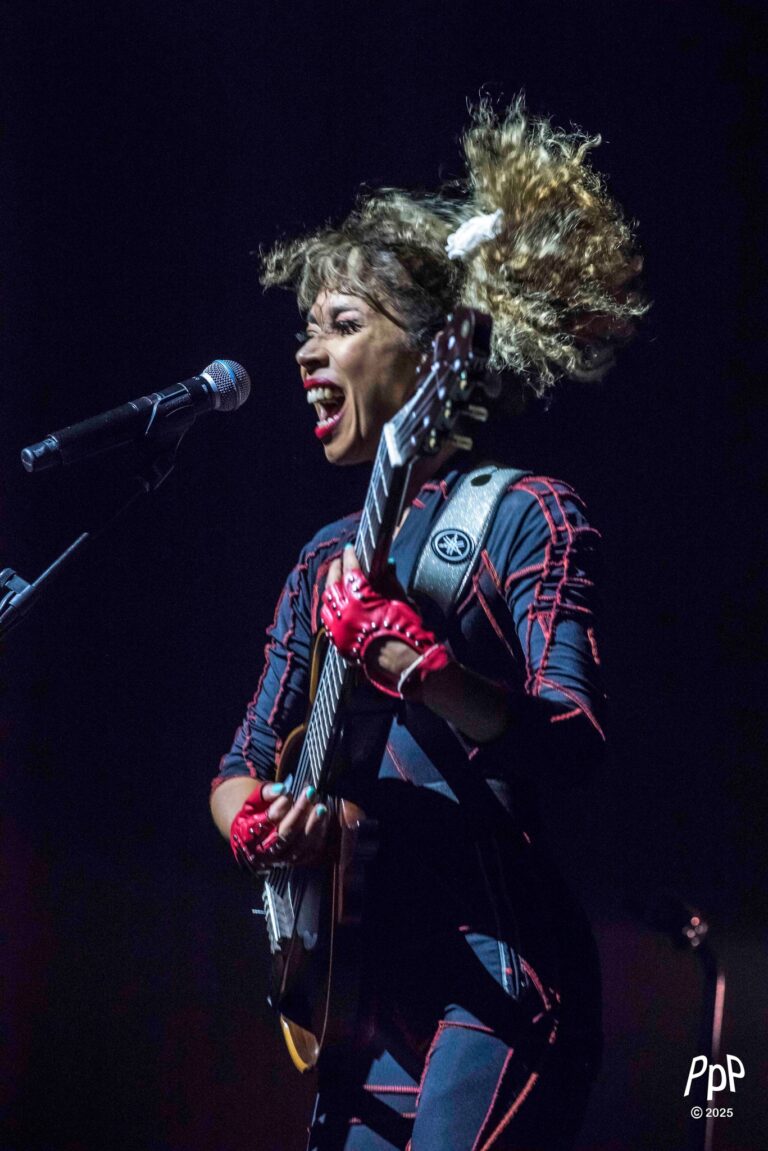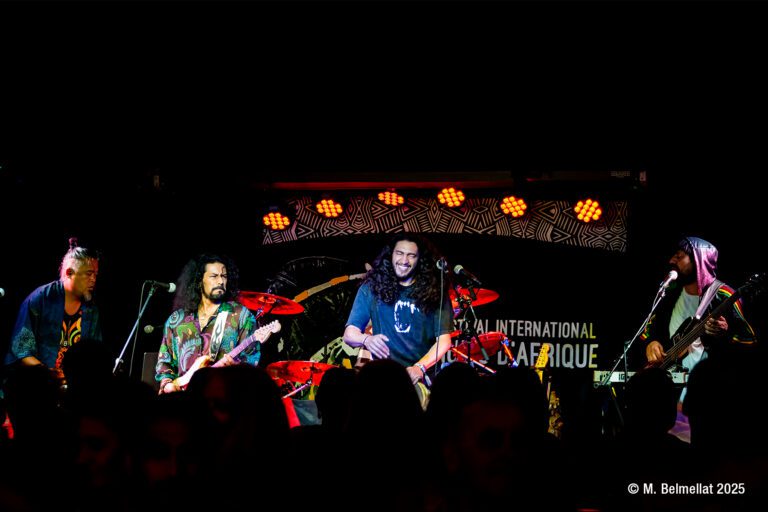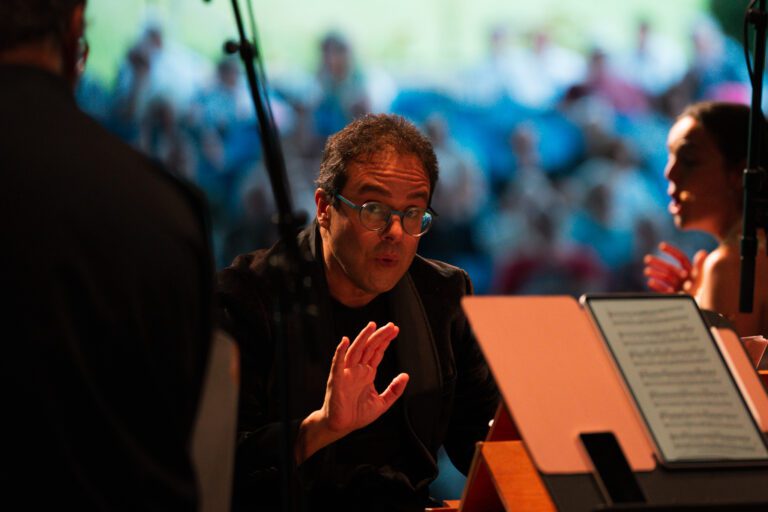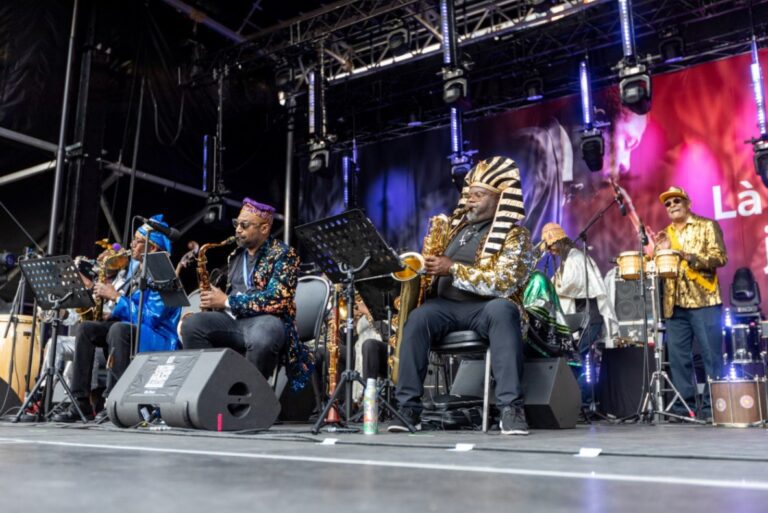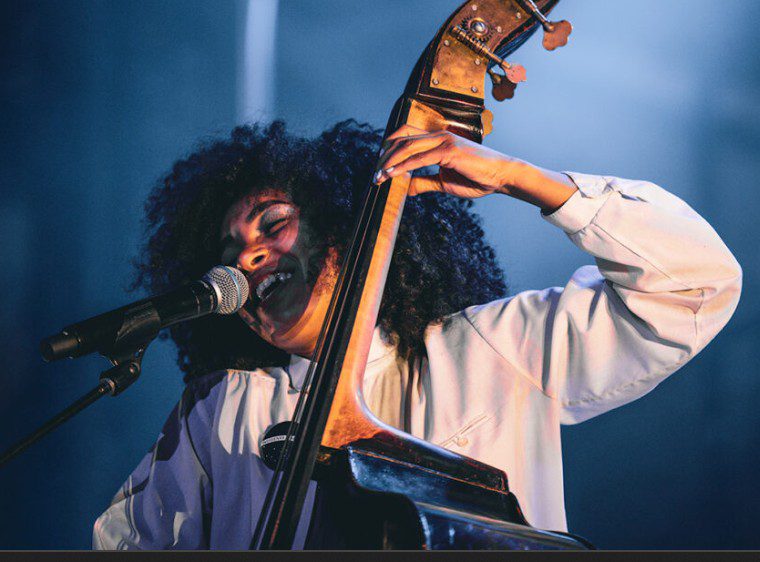It is said that he embodies the renewal of Senegalese music, an honor that the singer and guitarist Sahad carries as a responsibility, in order to make the art and culture of his country shine.
Last night, at the Balattou club, and on the occasion of the 2025 Nuits d’Afrique Festival in Montreal, the energetic and devilishly effective artist lit up the famous Montreal bar with his captivating blend of afrobeat, sometimes leaning towards pop, plenty of funky and well-brass-heavy tunes, and rare echoes of mbalax, because Sahad doesn’t really do mainstream Senegalese pop music, but is not impervious to it either. He rather offers a tightly woven fusion propelled by lively singing and simple yet effective melodies. An ultra-coordinated band responded to the Senegalese star’s every command. They deserve to be named, exceptional as they were, and all-Montreal based : Rémi Cormier (trumpet), Lou Gael Koné (bass), Raphael Ojo (drums), Louis Plouffe (alto sax), and David Ryshpan (keyboards). Sahad is with family in Montreal, so he invited local friends like Vox Sambou, Freddy Massamba (who raised the roof with an exciting Funk rant), Afrotronix, Seydina Ndiaye, and the duo Def Mama Def. A tour of the existing albums made up the first set and the beginning of the second, but the end of the latter allowed us to appreciate a few tracks from the next, African West Station, scheduled for the fall. Funky Nation, We Can Do, tracks that made us sing and sway, and which promise a rather remarkable album, thank you. Yes, Sahad is truly one of the most captivating and irresistible voices in the Senegalese artistic firmament.
